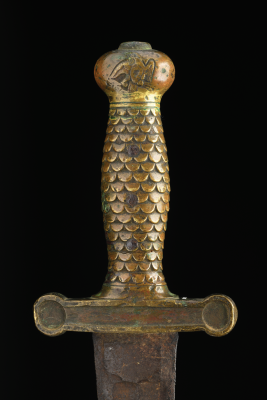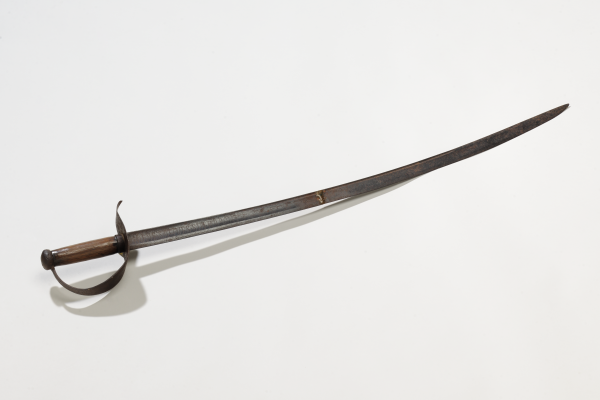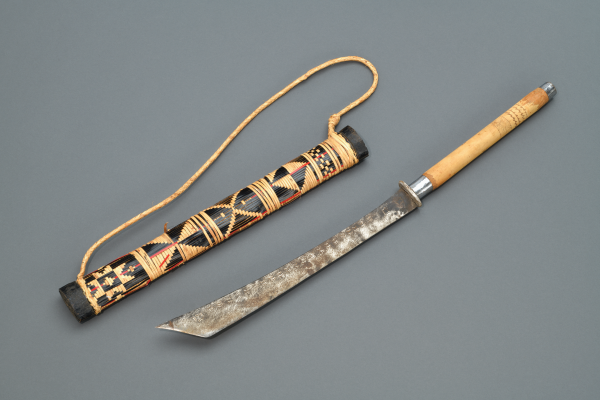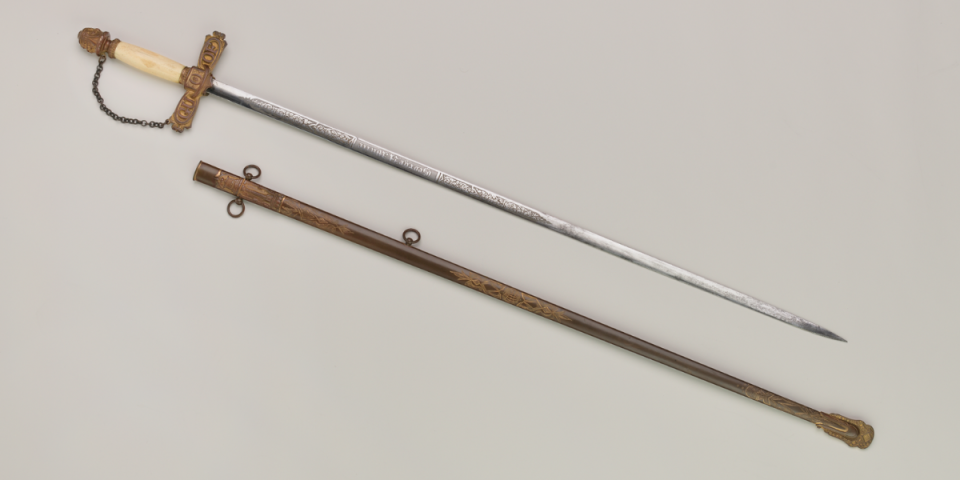Author: Charlie Knight, Curator of Military History

I was going to begin this article about the swords we have at the NC Museum of History (NCMOH) with a joke, but I’m trying to cut down. Really, what would be the point? Okay, I’ll cut to the chase now.
Swords can perform several functions: a weapon, a tool, a symbol of power or authority. They come in various styles: heavy broad swords, requiring two hands to wield; short-bladed “gladiator” style swords; short curved-blade naval cutlasses; thin-bladed ceremonial swords; sword canes, which doubled as walking sticks; and many others.
The museum has several dozen swords, ranging from the 18th century through the present. Many, but not all, are military. Most are American, but some come from Europe, some from the Middle East, and some from Asia. We have a Scottish sword used at the 1776 Battle of Moores Creek Bridge (a classic “don’t bring a sword to a gunfight” battle if there ever was one); an NC State Guard officer’s sword carried by Hall of History founder Colonel Fred Olds; an early 19th-century sword cane used by NC Supreme Court justice Joseph Daniel; a presentation sword given to Lieutenant John B. Reed of the 35th US Colored Troops; a Masonic sword which belonged to Governor R. Gregg Cherry; and many others.
Three of the more recent additions to the sword collection could not be more different from each other. One was used by both sides during the American Revolution; one was used to cut heavy jungle vegetation during the Vietnam War; and one is a fraternal sword belonging to an African American Congressman.

Nathan King was 27 years old when he joined the Patriot forces during the American Revolution as a captain in the 5th NC Regiment. He served in the Carolinas fighting first regular British soldiers, then Loyalists led by Colonel David Fanning. King carried a sword which, according to family tradition, he captured from a British or Hessian cavalryman. The blade is Spanish-made and sports the inscription “NO ME SAQUES SIN RASON, NO ME ENBAINES SIN HONOR” meaning “Draw me not without reason, do not sheath me without honor.” Interestingly, the handle and guard are American-made, suggesting that King had the blade remounted by a local blacksmith for some reason, possibly due to battle damage.

During the Vietnam War, thousands of Montagnards—the Indigenous inhabitants of the Central Highlands of Vietnam—aided US troops, mainly Special Forces. More than a decade after the war, several thousand Montagnards immigrated to North Carolina. Several years ago, the museum acquired a large collection of Montagnard artifacts, including several machete-like swords thought to have been used during the war, from Michael C. Little, who served in Vietnam and worked closely with some Montagnard groups.
Attorney George Henry White was born in Bladen County and was one of the last Black members of Congress in the 19th century. Throughout his career, he was one of the leading voices for equal rights and a strong proponent of education. White joined the Grand United Order of Odd Fellows, a fraternal order whose officers carried ceremonial swords.

So next time you’re browsing our collection, keep a sharp lookout for some of our swords. (I’ll see myself out now.)
